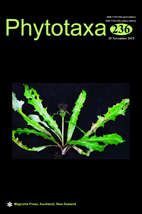Abstract
During a survey of freshwater diatoms from streams in the west region of the Tianmu Mountains, Zhejiang Province, China, a new Oricymba species, Oricymba tianmuensis sp. nov. has been recorded. A detailed morphology description of O. tianmuensis is presented, based on light and scanning electron microscopy. Oricymba tianmuensis sp. nov. is characterized by a ridge along the valve face typical of the genus, as well as a linear-lanceolate, symmetrical or slightly dorsiventral outline with a gibbous central portion gradually tapering or nearly paralleling towards the bluntly cuneate poles, a distinct rhombic-lanceolate asymmetric central area with a distinct stigma on the ventral side of the central nodule, a slightly lateral raphe with widened proximal endings and strongly deflected distal endings, and weakly radiate striae. Morphological features of the taxon are compared with similar species, and the biogeography of the genus is summarized.

